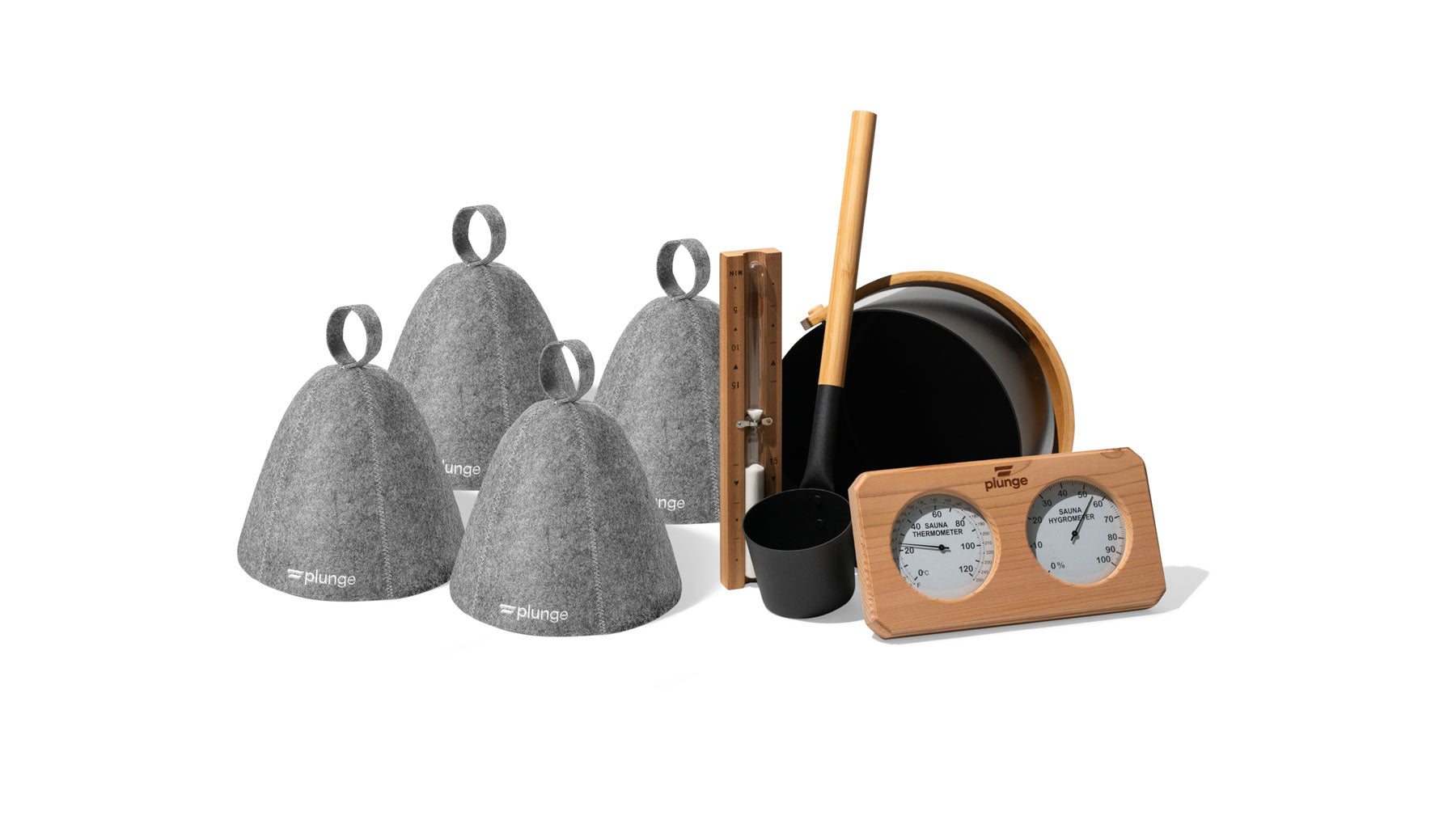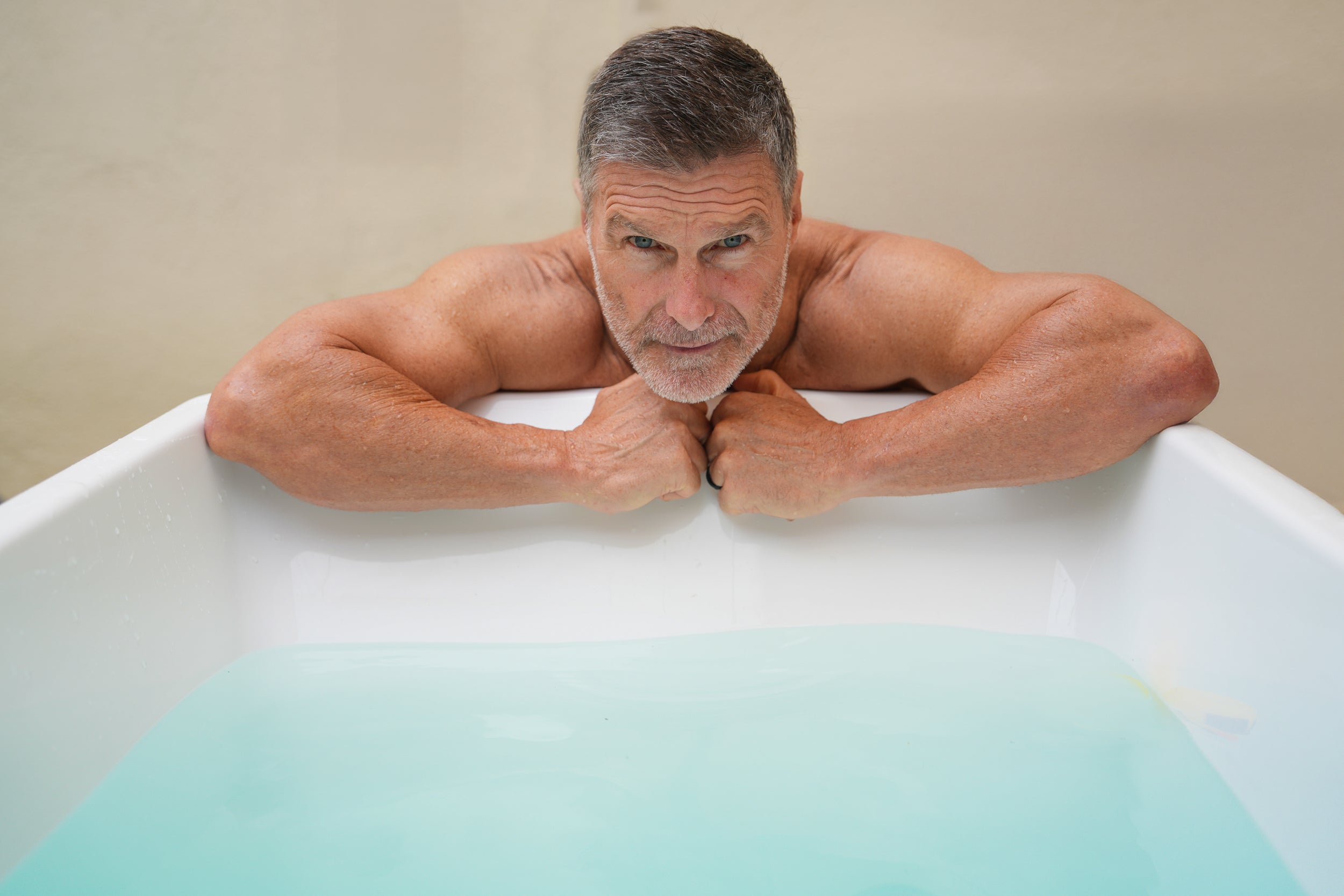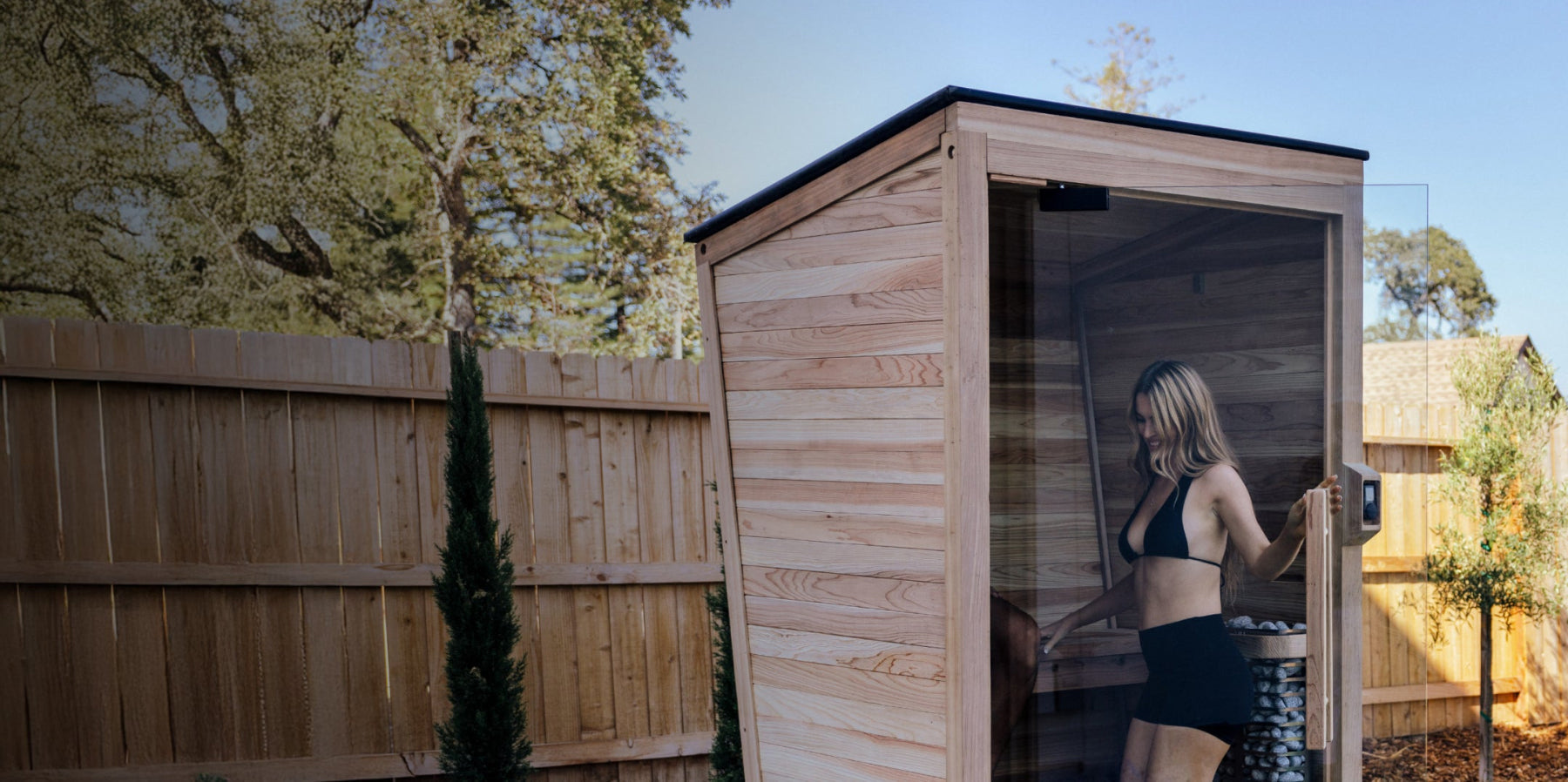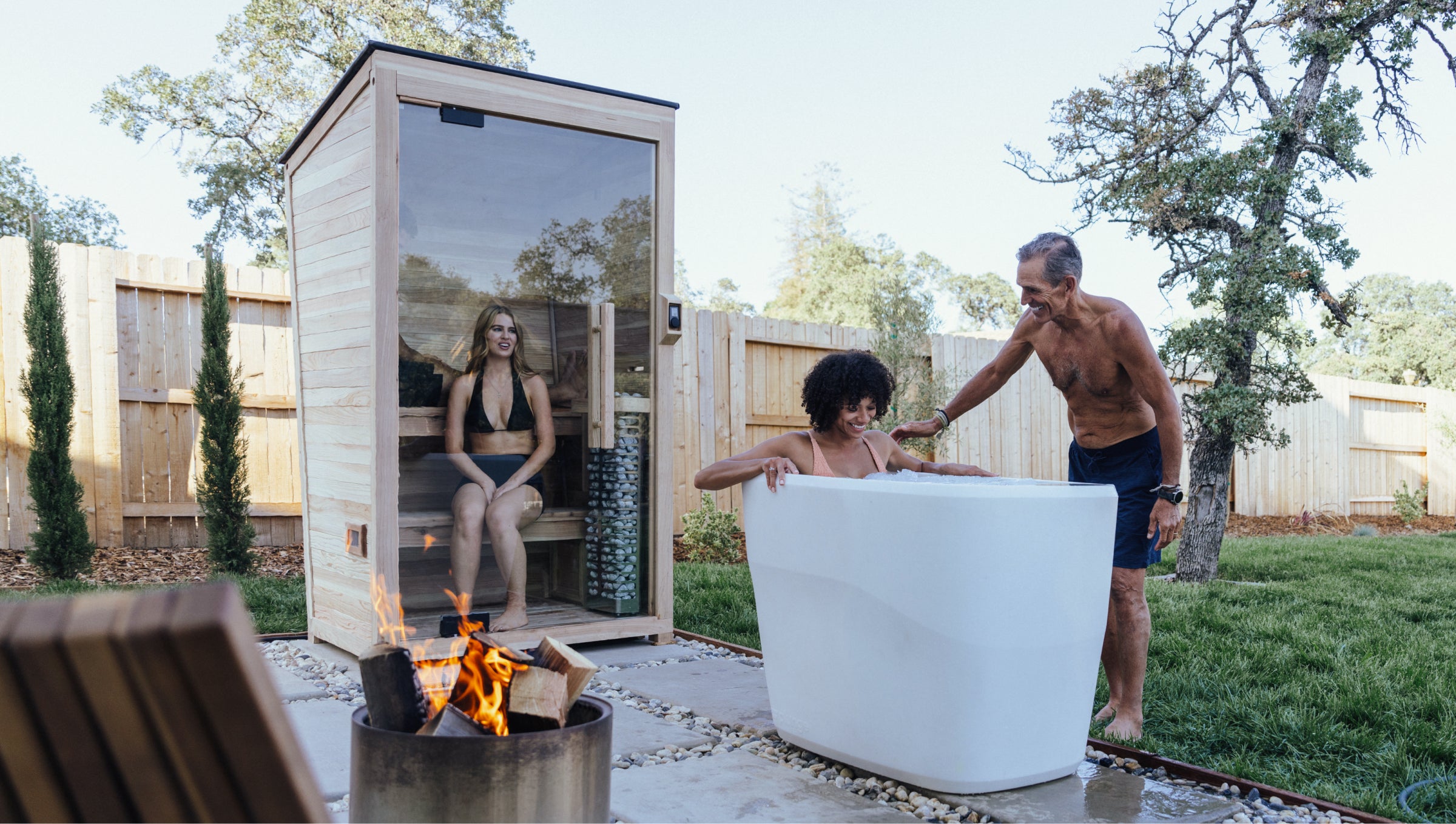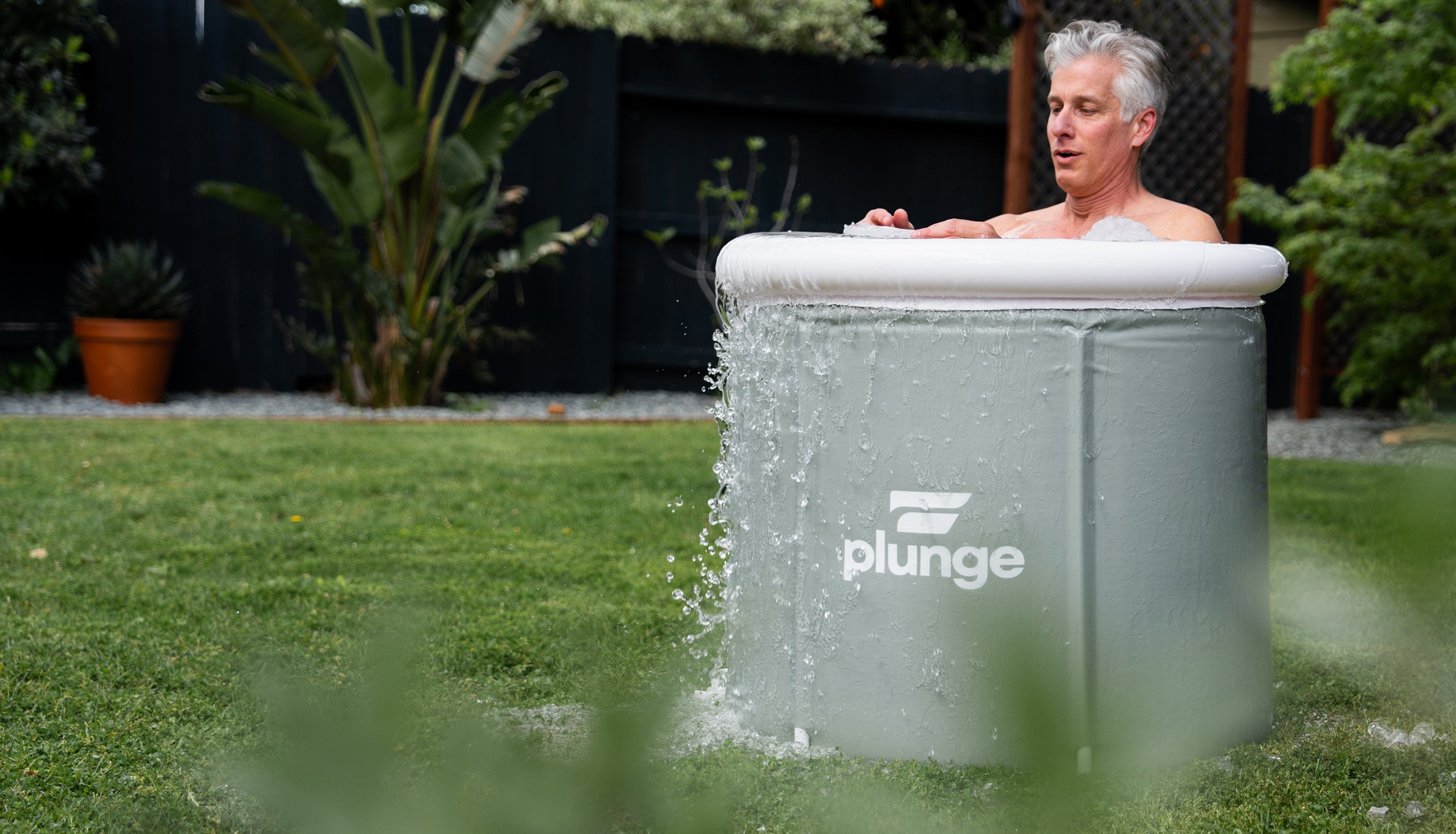
Stages of Cold Water Immersion: What Happens During Each?
The idea of plunging into icy water might seem crazy at first, but cold water immersion (CWI) or cold plunging has been gaining traction as a powerful biohack for health and wellness. It involves submerging yourself in cold water between 40-55°F for short periods and provides numerous science-backed physiological and psychological benefits. While the stages of cold water immersion can be dangerous in situations like boating accidents, understanding them in the context of cold plunging can help you harness the full potential and get the most out of CWI for your health and wellness journey.
Stress Isn’t Always Negative
Let’s start with some background. Stress often carries a negative connotation, but not all stress is bad. As discussed in our article about hormetic stress, cold water immersion introduces a controlled form of stress called hormesis. This essentially exposes your body to low doses of biological stress to stimulate positive adaptive responses. In fact, it's the same principle that forms the foundation of intermittent fasting and general exercise. Controlled exposure to stressors like cold water can enhance resilience, improve metabolic plasticity, and bolster the immune system.
Preparing for a Cold Plunge
So are you thinking about trying cold plunging? Preparation is key to a successful ice bath, as slow acclimation helps reduce the intense shock to your system. We’d recommend starting with a cold pool (this ensures water coverage of your entire body, not just small portions like a cold shower) and progressively spending longer in the water over several sessions. Plan to have a warm, dry area (like a traditional sauna) to move to after getting out.
However, mental readiness is as important as physical readiness. Breathwork exercises, which we’ll cover in more detail further down, can prepare your mind and body for the plunge. This improves your ability to manage the initial shock and maintain composure.
Note: Before cold plunging, make sure you're in good health and talk to a doctor if you have pre-existing conditions. Listen to your body — if you experience discomfort, ease up or end the session.
Cold Water Shock Stages
When exposed to cold water, the body experiences four distinct stages. These are determined by how long your body has been in the water as well as the symptoms that accompany each.
What Happens During Stage 1 of Cold Water Immersion (CWI)?
As soon as you immerse yourself in cold water, your body reacts immediately, triggering the cold shock response. This first phase is marked by a steep heart rate and blood pressure increase, sometimes accompanied by involuntary gasping and rapid breathing. Your body's sympathetic nervous system also kicks into high gear, releasing a surge of adrenaline. This is a survival mechanism designed to keep your muscles primed and ready to act in potentially dangerous situations. Stay calm, control your breathing, and avoid panicking to navigate this initial shock effectively.
How long it lasts: Typically the first 0-2 minutes of CWI
What Happens During Stage 2 of Cold Water Immersion?
As you move into the second stage of CWI, your body begins to adapt to the cold temperature. Blood vessels constrict to preserve core body temperature, diverting blood flow away from extremities like hands and feet to protect vital organs. This vasoconstriction can lead to numbness and tingling in the fingers and toes, but the body periodically restores blood flow to the areas to prevent tissue damage. This cycle of constricting and dilating can improve peripheral circulation and overall vascular health. This stage is also where many people report enhanced mental clarity and alertness.
How long it lasts: Around 2-3 minutes
What Happens During Stage 3 of Cold Water Immersion?
In the third stage of CWI, your body enters thermogenesis to maintain its core temperature. This manifests in symptoms like shivering as your muscles contract to generate heat. Stage 3 also releases a significant amount of endorphins, the body's natural painkillers. These are what cause the euphoric feelings often experienced after a cold plunge. While prolonged exposure at this stage can be dangerous, brief and controlled exposure has benefits that include brown fat activation, reduced inflammation, and more.
How long it lasts: Usually 3-5 minutes
What Happens During Stage 4 of Cold Water Immersion?
Stage 4 cold water immersion (post-immersion collapse) is exposure beyond 10 minutes, which increases the risk of hypothermia. This is when your body loses heat faster than it can produce it, leading to a dangerously low core body temperature. Symptoms of this stage include confusion and lethargy, and this is why it’s crucial to monitor how much time you’ve been in cold water and know when to get out.
How long it lasts: Anything after 10 minutes in cold water
What to Expect in an Ice Bath
An ice bath uses cold water immersion in a safe and controlled environment to maximize the benefits of the first three stages without the dangers of the fourth stage. Cold plunges typically sit between 40-55°F depending on the tub, session length, and desired results. They’re often used by athletes for recovery because CWI can significantly reduce muscle soreness and inflammation. Typical immersion times range anywhere from 30 seconds to 10 minutes, focusing on the first few stages and ensuring a safe and invigorating experience.
Staying Safe While Cold Plunging
As we’ve reiterated, safety is paramount when doing cold water immersion. Always start slowly and listen to your body (don’t push your limits). Never plunge alone, have a quick exit strategy, bring warm clothes or a blanket, and consult with a healthcare professional if you have any pre-existing conditions.
Importance of Breathwork
Another important safety consideration for ice baths is breathwork. As mentioned in Stage 1, cold water usually results in an involuntary gasp as you get in. Techniques such as box breathing and the Wim Hof Method can help you stay calm, reduce the cold shock response, and enhance your overall experience. However, it's crucial to practice these techniques safely and never alone, as there is a risk of passing out. Proper breathing can also improve oxygen delivery to tissues and support the body's stress response, but always ensure you have someone with you to monitor your safety during breathwork in cold water immersion.
Brave the Cold
Cold water immersion offers a unique journey through several physiological stages. As we’ve seen, incorporating cold plunges into your routine can enhance resilience, improve mood, and support overall health. You can invest in this powerful practice and experience the transformative benefits of a home cold plunge tub. These offer a convenient, clean, and effective way to experience the benefits of CWI from your own home (and without getting in dirty water like at the gym). Their self-cleaning systems feature ozone sanitation, 20-micron filters, and more — and are easy to plug in and plunge.
Medical Disclaimer: The information contained in this post is for informational and educational purposes only. It is not intended to provide medical advice or to take the place of such advice or treatment from a personal physician. All readers/viewers of this content are advised to consult their doctors or qualified health professionals regarding specific health questions or before embarking on any new health or wellness routine, including saunas and cold plunging. Neither the author(s) nor the publisher of this content take responsibility for possible health consequences of any person or persons reading or following the information in this educational content. All viewers of this content, especially those taking prescription or over-the-counter medications, should consult their physicians before beginning any cold plunging routine or other health or wellness program.







